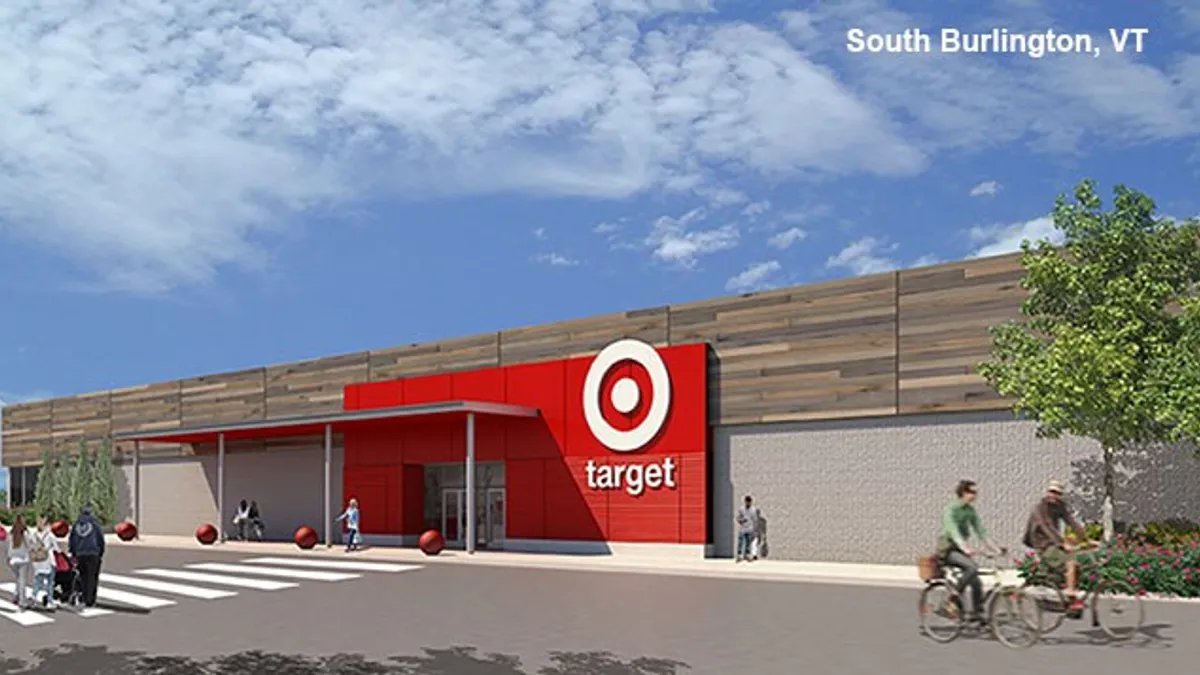Editor's Note: The following is a guest post by Amit Sharma, CEO of Narvar. The views are the author's own.
Target's revenues were up 3.4% in 2018 compared to the year before, bringing in $72 billion in sales. The company finished strong with an ever-important fourth quarter that saw nearly 6% year-over-year growth. The bigger picture: the Bullseye has been steadily recovering since 2006 when revenues were only $52 billion and e-commerce players like Amazon began to take market share. Now, it's maintaining steady growth.
After becoming just another big-box retailer in the early 2000s, Target has recovered its 1990s-born "Tar-jay" reputation, which resonated with Gen X. It's cheap but attractive, it's common but somehow chic, it feels easy and guilt-free. And it's working. Target, according to a Gartner L2's Big Box U.S. 2018 report, saw more sales growth than Walmart in 2018.
Target's comeback story is partly about returning to its roots and partly about embracing digital transformation. It's clear the brand isn't thinking about retail in a siloed way or even with an omnichannel mindset. The strategy is more fluid, more channel-less, more modern. In particular, it has made three moves to stay ahead of new buyer behaviors and e-commerce trends.
Embracing D2C
Target has seized upon the direct-to-consumer (D2C) phenomenon by selling products online and in-store from a dozen startups, most recently partnering with electric toothbrush startup Quip and natural deodorant brand Native. Other notable D2C partners include men's grooming player Harry's, mattress company Casper, and pet products retailer Barkbox.
Successful D2C products, more often than not, don't just sell well because they function properly — they're design-focused and tech-savvy and are sold by customer-experience-minded marketers. This combination creates an aspirational feel for consumers as they are getting customized products and experiences that speak to their lifestyle. Target is leveraging D2C product partners to help reestablish the brand's cutting edge and manifest new fans among millennials and Gen Z. Most importantly, Target isn't just approaching D2C as a fad, as a pop-up store or microsite that will come and go. It's embedding the D2C mindset within its brand to change consumers' perceptions. It's not worried about channels; instead, it's concerned with the customer experience no matter if it happens online or offline.
This winning concept isn't all about becoming cool among younger folks. While Target hasn't publicly commented on the data it's getting from the digital and offline sales of the D2C products, the metrics are almost certainly being looked at to forecast trends and inform merchandising across channels.
Target-ing social media
When done well, social media drives sales for retailers — especially among young adults. While 35% of millennials have made a direct purchase thanks to social media, another nearly 30% are open to the idea.
Social media has been key for the retailer getting its "Tar-jay" image back. The brand has 29 million followers across Facebook, Instagram and Twitter. While 24 million of those consumers come by way of Facebook, interestingly, Target treats each social channel with a different content mindset. Facebook and Twitter posts present, at times, fun posts such as: "Hello, I'm a Target. You may know me from my greatest hits including: ‘I only need one thing.' ‘This is only a dollar?!' ‘I should've grabbed a cart.' And, ‘Thanks, I got it from Target.' Such whimsical notes are mixed with more transactional content such as discount reveals or buy-one-get-one-free (BOGO) offers.
What the brand has been doing via Instagram is worth a close look. It's all about engagement. Target has 3.5 million followers on Instagram (compared to Walmart's 1.5 million), which complements its D2C strategy for renewing the brand image and inspiring a new generation of fans. Instagram has 1 billion users, and over a quarter of them are 25 to 34 years old. This group is Instagram's largest demographic, making it incredibly valuable to any brand trying to reach those consumers. Target's marketers "get" Instagram in spades; more than half of their posts in the last month have received more than 20,000 likes. One recent post featured a simple photo of a llama-shaped plant basket for sale, using cheeky copy — "Llama just tell you, this basket is everything" — and garnering more than 52,000 likes.
Retooling stores for digital consumers
Given that 90% of sales still happen offline, it's been important for Target to not only digitally transform but also rethink its stores. For example, the brand has begun giving stores two different entrances. The first entrance is more aspirational, including a curved path that runs throughout the space and creates a visual experience with elevated product displays. The other entrance is for shoppers who need to get in and out of the store quickly; this entrance also has self-checkout, grab-and-go food items and a beer/wine shop.
Perhaps more importantly, this entrance serves customers who are picking up online orders or returning them. Target has also started offering same-day online pick-up in stores and curbside grocery pickup, and these measures have worked swimmingly: Digital sales were up 41% the quarter after introducing the offer last year. Indeed, this big-box player understands it's crucial to provide customers with delivery options and reminds them via email post-purchase about where their order is in the fulfillment chain. The messaging is worth it, especially among millennials and Gen Z: 62% of adults between 18 and 24 feel panic after failing to immediately receive a purchase confirmation email.
Advancing to a millennial mindset
Target's evolution in the last couple of years shows it understands how to appeal to the next generation of shoppers while building sales now. After too long of an absence, it's used D2C partners, social media and new store concepts to get its Tar-jay back.




















